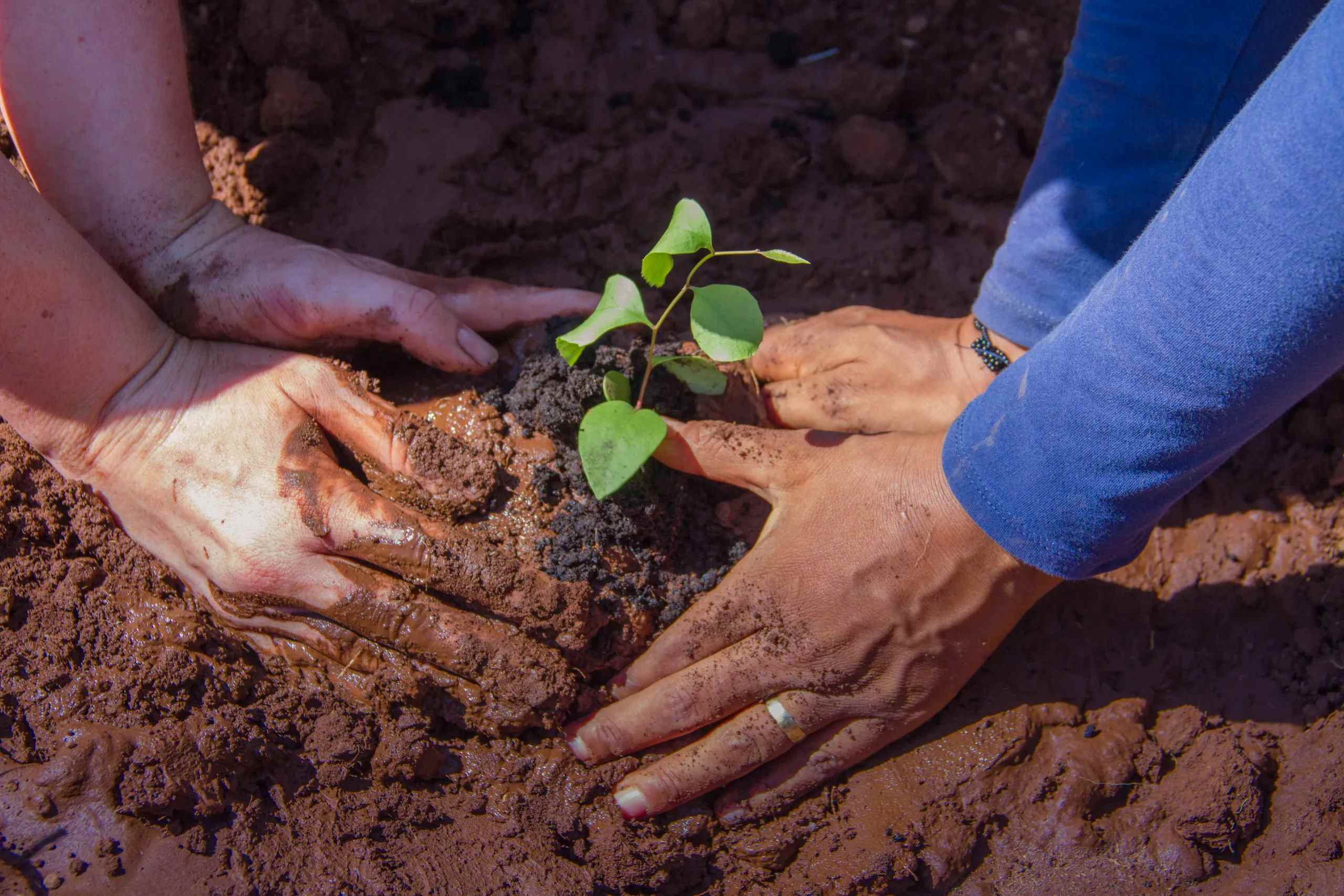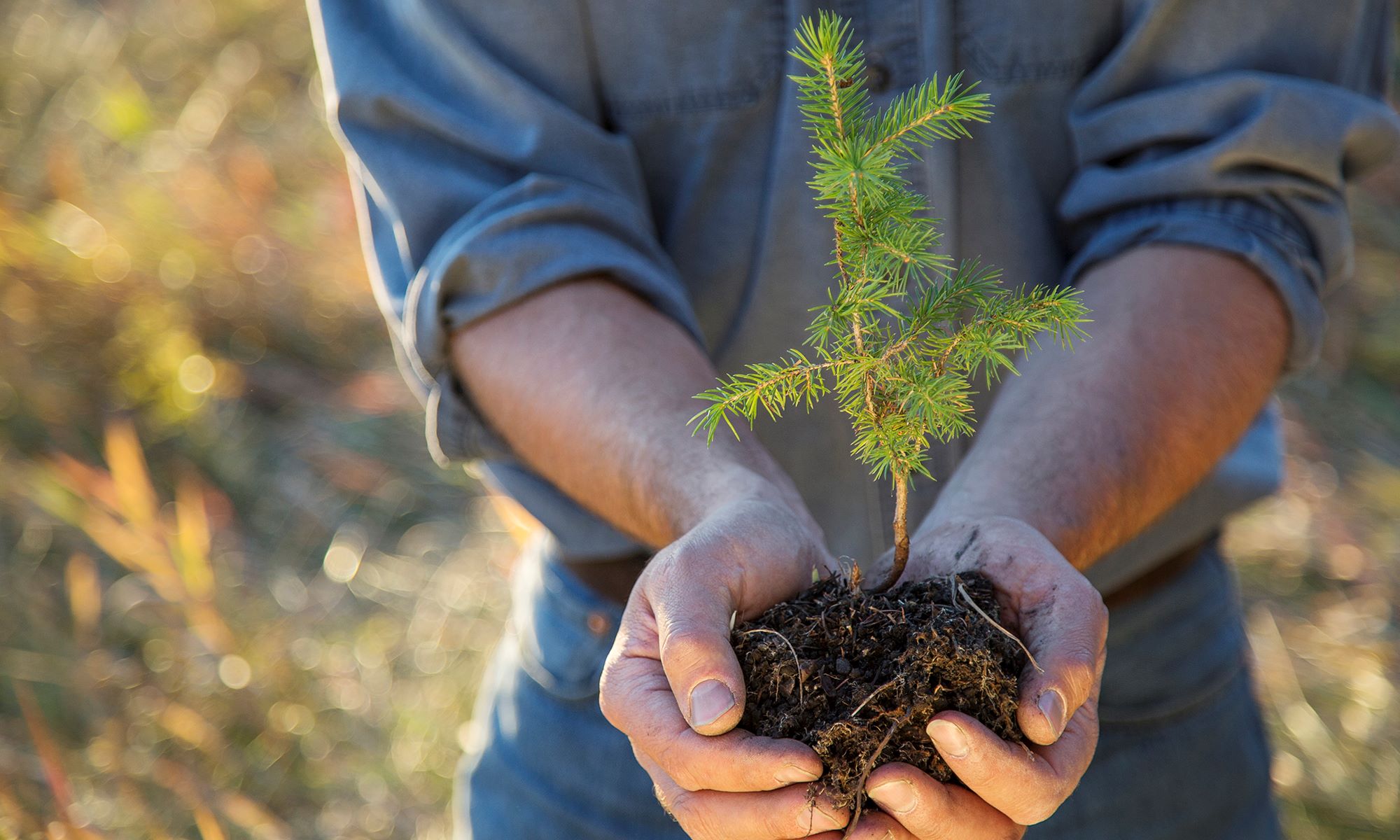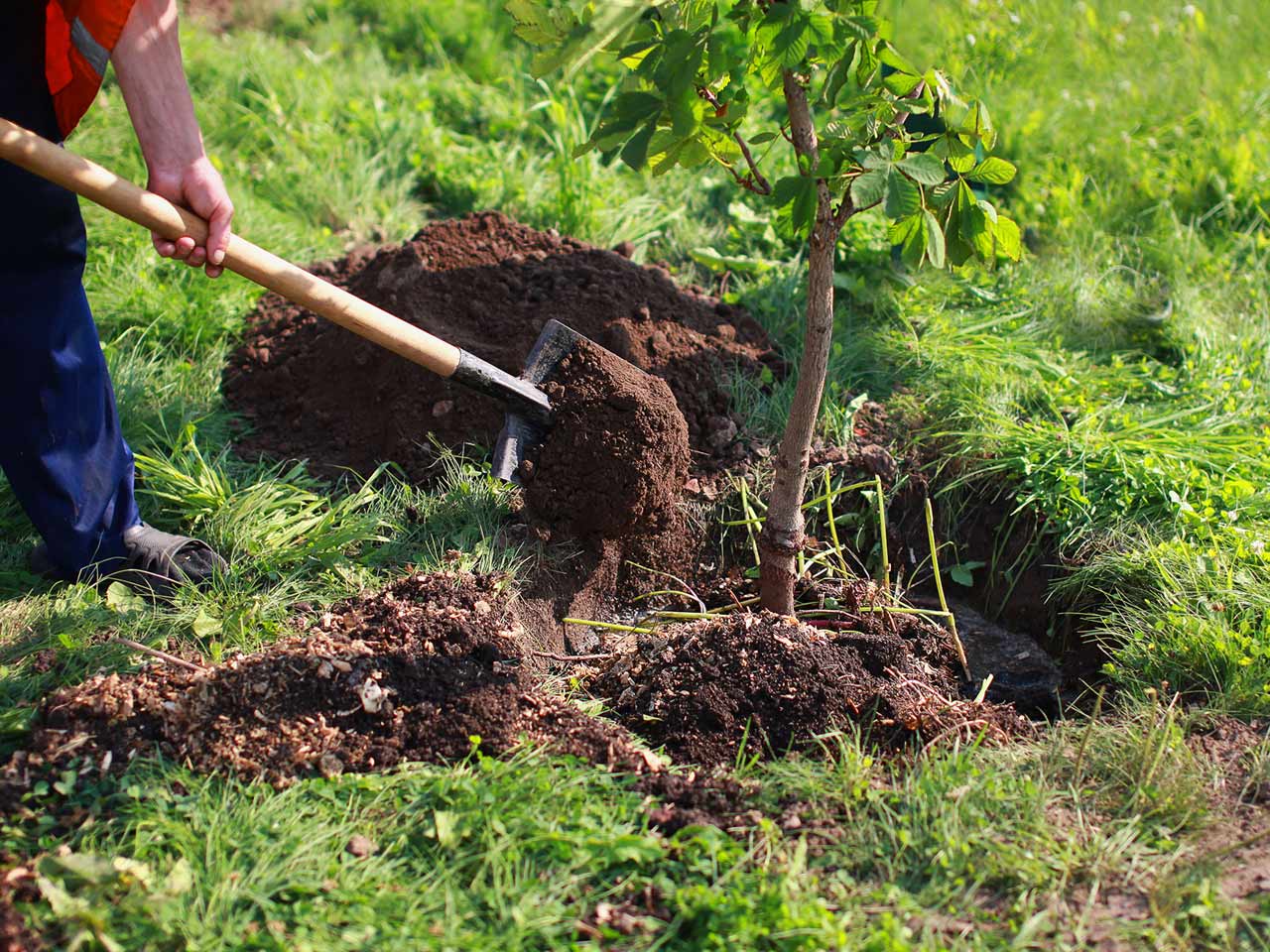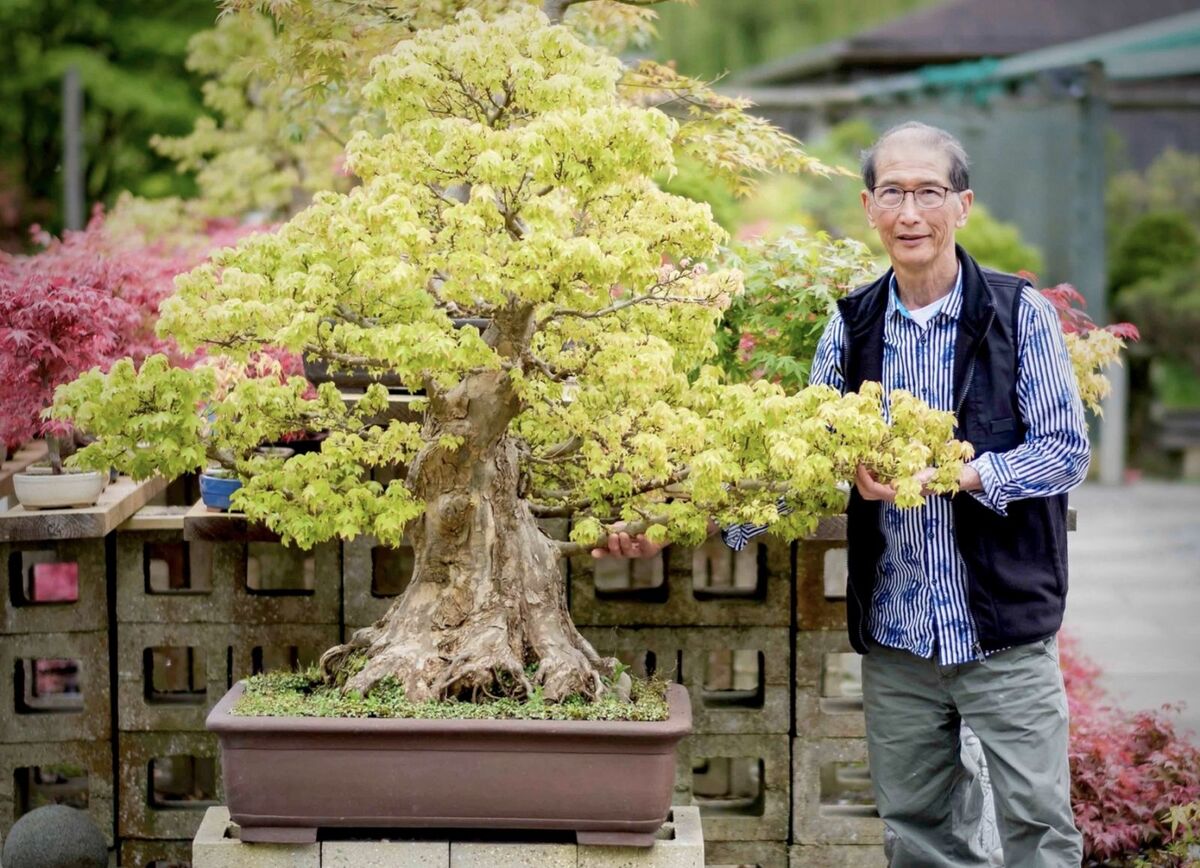Home>Gardening Basics>Getting Started>How Much To Charge For Planting Trees
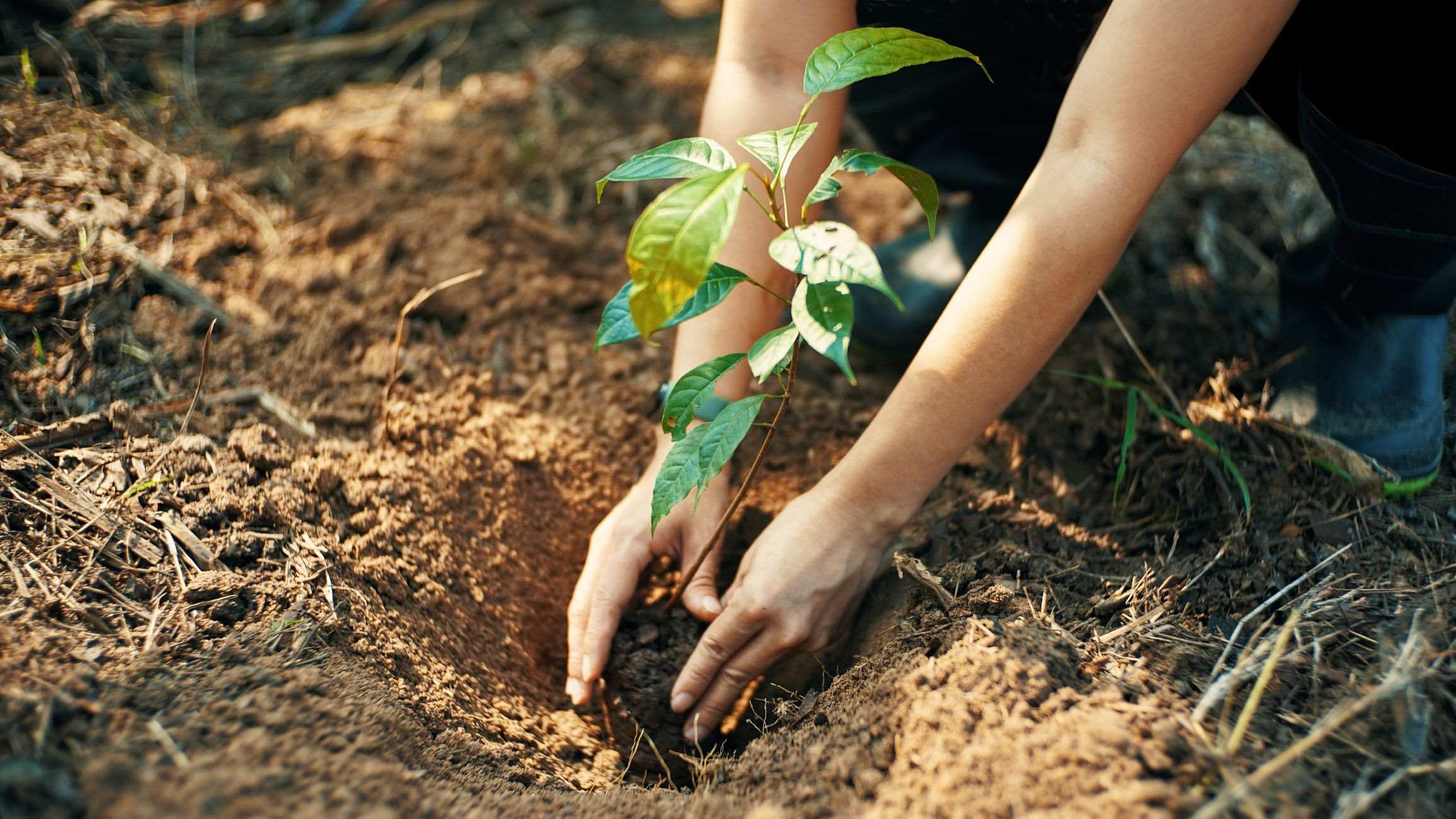

Getting Started
How Much To Charge For Planting Trees
Modified: January 22, 2024
Learn how to get started with planting trees and discover the best pricing strategies for your tree planting services.
(Many of the links in this article redirect to a specific reviewed product. Your purchase of these products through affiliate links helps to generate commission for Chicagolandgardening.com, at no extra cost. Learn more)
Table of Contents
Introduction
Planting trees is not only aesthetically pleasing, but it also plays a crucial role in creating a sustainable and healthier environment. Whether you are a professional landscaper or an individual looking to add some greenery to your property, understanding how much to charge for planting trees is essential. Determining the right pricing strategy can be a daunting task, as it involves considering various factors such as the cost of trees, labor, equipment, and competition in the market.
Planting trees requires careful planning and execution to ensure their long-term survival and growth. It involves assessing the site, choosing the right tree species, preparing the soil, and providing ongoing maintenance. As a result, professional tree planting services have become in-demand and can be a profitable venture for qualified individuals or companies.
In this article, we will explore the factors to consider when determining how much to charge for planting trees. We will delve into the cost of trees, labor costs, equipment and materials costs, as well as additional expenses that need to be taken into account. Furthermore, we will discuss various pricing strategies, conducting market research, and calculating the total cost to assist you in setting competitive and fair prices.
Factors to Consider
When determining the pricing for planting trees, several factors need to be taken into consideration. These factors will not only affect the overall cost but can also impact the success and quality of the tree planting project. Let’s explore some of the key factors:
- Size and Species of Trees: The size and species of the trees to be planted will play a significant role in determining the pricing. Larger trees typically require more labor and equipment for handling and planting. Rare or exotic tree species that are harder to find or require specialized care may also be priced higher.
- Location and Site Conditions: The location of the planting site and the conditions of the soil can influence the pricing. Difficult access or uneven terrain may require additional time and effort to prepare and plant the trees, resulting in higher costs.
- Number of Trees: The quantity of trees to be planted is an obvious consideration. Most tree planting services offer reduced rates for bulk orders, as it allows for more efficient use of labor and resources.
- Site Preparation: Proper site preparation is crucial for the successful establishment of planted trees. If the site requires extensive clearing, soil amendment, or weed removal, the labor and materials required for these tasks should be taken into account when pricing the project.
- Maintenance and Warranty: Offering ongoing maintenance and a warranty for the planted trees may increase the overall cost. This can include watering, fertilizing, and pruning services, as well as guaranteeing the health and growth of the trees for a specific period, such as a year or two.
By carefully considering these factors, you can ensure that your pricing is fair and reflective of the effort and resources required to successfully plant trees. It is important to convey these considerations to clients, helping them understand the value they receive by utilizing your services.
Cost of Trees
The cost of trees is a significant factor to consider when determining the pricing for tree planting services. The price of trees can vary widely depending on their size, species, and availability. Here are some key points to consider:
- Size: Larger trees generally come with a higher price tag. This is due to the longer cultivation time, increased labor and equipment required for handling and transportation, and the higher demand for mature trees in landscaping projects.
- Species: Different tree species vary in their cost due to factors such as rarity, demand, and growth characteristics. Common tree species that are easily propagated may have a lower price, while rare or exotic species may come at a premium.
- Quality: The overall health and quality of the trees will also influence their cost. Healthy, well-maintained trees with a good root system are more likely to thrive after planting, but they may be priced higher compared to trees that are stressed or of lesser quality.
- Source: The source of the trees can also impact their price. Local nurseries or tree farms may offer competitive prices, while specialty nurseries or those that import trees from different regions may charge higher prices due to transportation and import costs.
- Quantity: Purchasing trees in bulk can often result in lower per-unit costs. Some suppliers may offer volume discounts, allowing tree planting services to secure a better price when purchasing large quantities of trees.
It is important to factor in the cost of trees when determining the overall pricing for your tree planting services. This ensures that the pricing reflects the investment made to source and provide high-quality trees for your clients.
Labor Costs
Labor costs are a significant component to consider when determining the pricing for tree planting services. The amount of labor required will depend on various factors, including the size and number of trees to be planted, the complexity of the site, and the specific tasks involved. Here are some key points to consider:
- Planting Crew: The size and expertise of the planting crew will impact the labor costs. Larger crews may be necessary for handling and planting larger trees or completing the project within a shorter timeframe. Additionally, experienced crew members may command higher rates due to their specialized skills.
- Site Preparation: Labor costs should include the time and effort required for site preparation tasks such as clearing debris, excavating holes, and amending the soil. The complexity and condition of the site will affect the amount of labor needed.
- Transportation and Setup: If the trees need to be transported to the planting site or require specialized equipment for installation, labor costs should account for the time spent on transportation, setup, and any necessary adjustments or anchoring.
- Additional Services: Additional services such as staking, mulching, and watering may also require additional labor. These services contribute to the long-term success of the planted trees and should be factored into the labor costs accordingly.
- Experience and Expertise: The level of experience and expertise of the team can impact labor costs. Highly skilled professionals who can efficiently and effectively perform the necessary planting tasks may command higher rates.
By accurately estimating the labor required for a tree planting project, you can ensure that your pricing is fair and covers the costs associated with completing the work to a high standard. Additionally, consider the potential for unforeseen circumstances or challenges that may require additional labor, and factor this into your pricing accordingly.
Equipment and Materials Costs
When determining the pricing for tree planting services, it is important to consider the costs associated with equipment and materials. Having the right tools and materials not only ensures a successful tree planting project but also affects the efficiency and quality of the work. Here are some key points to consider:
- Tools: Tree planting requires a variety of tools such as shovels, wheelbarrows, pruning shears, and hand trowels. The costs associated with purchasing, maintaining, and replacing these tools should be factored into the overall pricing.
- Machinery: Depending on the size and complexity of the planting project, additional machinery may be required. This can include equipment such as diggers, augers, tree spades, and cranes. Costs associated with renting or maintaining this machinery should be considered.
- Planting Materials: Materials such as topsoil, compost, mulch, stakes, ties, and tree guards may be necessary for the successful establishment of planted trees. These materials should be sourced and priced to ensure that they are included in the overall cost.
- Fertilizers and Amendments: Depending on the specific needs of the planting site and the tree species, fertilizers or soil amendments may be required. The costs of these materials should be factored into the pricing, considering the quantity and quality needed.
- Safety Equipment: Safety should always come first, and the costs associated with safety equipment such as gloves, helmets, safety glasses, and high-visibility vests should be included to ensure the well-being of the planting crew.
By accounting for the costs of equipment and materials, you can ensure that your pricing is fair and covers the expenses needed to provide a professional tree planting service. It is important to regularly assess and update these costs to reflect any changes in prices or equipment needed for the job.
Additional Costs
When determining the pricing for tree planting services, it is important to consider any additional costs that may arise during the project. These costs go beyond the basic expenses of trees, labor, and equipment. Here are some key points to consider:
- Permitting and Regulations: Depending on the local regulations and requirements, obtaining permits for tree planting may incur additional costs. It is essential to familiarize yourself with the necessary permits and factor in the associated fees.
- Transportation: If the tree planting site is located far from the nursery or requires long-distance transportation, transportation costs should be considered. This includes fuel costs, vehicle maintenance, and any tolls or parking fees.
- Disposal of Debris: Clearing debris and excess soil from the planting site may require additional costs for proper disposal. This can include fees for waste removal services, landfill charges, or recycling fees.
- Insurance and Liability: It is important to have proper liability insurance coverage to protect against any unforeseen accidents or damages during the project. The cost of insurance premiums should be factored into the pricing to ensure comprehensive coverage.
- Taxes and Business Expenses: As a business, you will have additional costs such as taxes, business license fees, marketing expenses, and insurance premiums. These costs should be factored into your pricing to ensure the sustainability of your tree planting business.
By considering these additional costs, you can ensure that your pricing is comprehensive and covers all the necessary expenses associated with providing a professional tree planting service. It is essential to thoroughly assess all potential additional costs to avoid any unexpected financial burdens during the project.
Pricing Strategies
When determining how much to charge for planting trees, it is important to consider various pricing strategies. These strategies can help you set competitive prices while ensuring profitability for your tree planting services. Here are some common pricing strategies to consider:
- Flat Rate Pricing: This strategy involves setting a fixed price for specific tree planting services. The price remains the same regardless of the size, species, or other variables. Flat rate pricing provides simplicity and ease of understanding for clients.
- Hourly Rate Pricing: This strategy involves charging clients based on the number of hours spent on the tree planting project. It requires accurate time tracking and provides transparency regarding labor costs. Hourly rate pricing is suitable for projects with varying complexities or specifications.
- Package Pricing: Package pricing involves bundling tree planting services with additional services such as site preparation, ongoing maintenance, or warranty. This strategy offers a comprehensive solution for clients and allows you to charge a higher price by providing added value.
- Value-based Pricing: Value-based pricing takes into account the perceived value that clients receive from your tree planting services. It considers factors such as the quality of planted trees, expertise of the team, and reputation of your business. This strategy allows you to set higher prices for the added value you provide.
- Market-based Pricing: Market-based pricing involves considering the prices charged by competitors in the market. This strategy allows you to set prices that are competitive and in line with industry standards. However, it is important to ensure that your pricing covers all costs and allows for a reasonable profit margin.
It is important to carefully evaluate each pricing strategy to determine which one best suits your tree planting services and target market. Consider factors such as your business goals, the uniqueness of your services, and the preferences and expectations of your clients. Remember to regularly review and adjust your prices as needed to remain competitive in the market.
Market Research and Competition
Conducting thorough market research and understanding your competition is crucial when determining how much to charge for tree planting services. This helps you gain insights into pricing trends, customer preferences, and the competitive landscape. Here are some key points to consider during your market research:
- Competitor Analysis: Identify and study your competitors who offer similar tree planting services in your target market. Analyze their pricing structures, service offerings, reputation, and customer reviews. This information allows you to assess your competitive advantage and set a pricing strategy that reflects the value you offer.
- Customer Demographics: Understand your target customer base and their preferences. Determine the typical budget range for tree planting services in your market. This knowledge will help you tailor your pricing to meet the expectations and affordability of your target customers.
- Value Proposition: Identify your unique selling points and highlight the value you provide compared to your competitors. It could be your expertise, use of high-quality trees, exceptional customer service, or additional services offered. Emphasizing these qualities can justify higher prices and attract customers who appreciate the added value.
- Feedback from Clients: Collect feedback from previous clients to gauge their satisfaction with your services. Understand their perceived value and willingness to pay for your tree planting services. This feedback can help you assess whether your pricing aligns with the value you deliver to customers.
- Pricing Adjustments: Regularly review and adjust your pricing based on market trends, changes in costs, and customer feedback. This ensures that your pricing remains competitive and aligns with the current market conditions.
Market research and competition analysis provide valuable insights into setting the right pricing for your tree planting services. By understanding your market and competition, you can position your business effectively, differentiate your offerings, and attract customers who appreciate the value you provide.
Determining an Hourly Rate
Setting an appropriate hourly rate is a common pricing strategy for tree planting services. It allows you to charge for the time and effort dedicated to each project. Here are the key factors to consider when determining your hourly rate:
- Cost of Labor: Calculate the average cost of labor for your team, including wages, benefits, and overhead expenses. This will serve as the foundation for determining your hourly rate.
- Profit Margin: Determine the desired profit margin for your business. Consider factors such as business growth, reinvestments, and sustainability. Add a percentage to your labor cost to account for profit.
- Experience and Expertise: The level of experience and expertise you bring to the table can influence the hourly rate. If you or your team members possess specialized skills or qualifications, factor this into the rate to reflect the added value of your expertise.
- Market Demand: Assess the market demand for tree planting services in your area. A high demand may allow you to charge a higher hourly rate, while a less competitive market may require a lower rate to attract customers.
- Industry Standards: Research the average hourly rates that other tree planting service providers in your area are charging. This will give you a baseline to work from and help you remain competitive in the market.
After considering these factors, calculate your hourly rate by dividing the total labor cost (including profit margin) by the estimated number of hours spent on each project. Keep in mind that the hourly rate may fluctuate depending on the specific requirements of each project.
Regularly reevaluate your hourly rate to ensure it remains competitive and aligns with your business goals. Adjustments may be necessary as you gain more experience, expand your services, or encounter changes in market conditions or costs.
Calculating the Total Cost
Calculating the total cost for tree planting services involves considering all the expenses involved, including labor, materials, equipment, and additional costs. By accurately estimating the total cost, you can determine a fair and profitable price for your services. Here’s how to calculate the total cost:
- Labor Cost: Estimate the total number of hours required for the project by considering various factors such as site preparation, planting, cleanup, and any additional services. Multiply the total hours by your determined hourly rate to calculate the labor cost.
- Materials Cost: Determine the cost of materials needed for the project, such as trees, soil amendments, mulch, and any other required supplies. Include the cost of purchasing or renting specialized equipment if necessary.
- Additional Costs: Account for any additional expenses such as permitting fees, transportation costs, disposal fees, or insurance premiums. Make sure to add these costs to the total estimated price.
Once you have calculated the separate costs, add them together to get the total estimated cost for the tree planting project. It is essential to review your estimate carefully to ensure accuracy and account for any potential contingencies or unforeseen expenses.
Keep in mind that the total cost should not only cover your expenses but also provide a reasonable profit margin for your business. It’s important to strike a balance between competitiveness in the market and sustaining a profitable operation. Regularly revisit and adjust your pricing calculations to remain aligned with market conditions and your business goals.
Pricing Examples
Understanding how to determine the pricing for tree planting services is essential, but seeing some practical examples can provide further clarity. Here are a few hypothetical pricing examples to illustrate different scenarios:
Example 1: Small Residential Project
A client wants to plant three small to medium-sized trees in their backyard. The project involves minimal site preparation, and the estimated total labor time is around 6 to 8 hours. Assuming an hourly rate of $40, the labor cost would range from $240 to $320. If the cost of materials, including the trees and necessary supplies, is $300, the total estimated cost for this project would be in the range of $540 to $620.
Example 2: Commercial Development
A commercial developer requires the planting of several trees in a large outdoor space for an upcoming project. The project involves extensive site preparation, including clearing debris and leveling the terrain. The estimated labor time is around 25 to 30 hours. Assuming an hourly rate of $50, the labor cost would range from $1,250 to $1,500. Considering the cost of materials, machinery rental, and additional services, the total estimated cost for this project would be in the range of $2,500 to $3,000.
Example 3: Specialty Tree Planting
A client desires the planting of rare and exotic tree species that require specialized care and expertise. The project involves sourcing these trees from a specialty nursery and ensuring specific soil requirements are met. The estimated labor time for this relatively complex project is around 12 to 15 hours. Considering the higher level of expertise and the added value of the unique tree species, an hourly rate of $60 is deemed appropriate. With the additional costs of materials, sourcing fees, and specialized equipment, the total estimated cost for this project would be in the range of $1,500 to $1,800.
These pricing examples demonstrate how different factors such as project size, complexity, materials, and expertise can influence the overall cost of tree planting services. It’s important to carefully consider these factors along with your business goals, market competitiveness, and profitability while determining your pricing for each project.
Conclusion
Determining how much to charge for planting trees requires a careful consideration of various factors. By analyzing the cost of trees, labor, equipment, and additional expenses, you can calculate a fair and profitable price for your tree planting services.
Factors such as tree size and species, site conditions, and the number of trees to be planted all impact the overall cost. Additionally, pricing strategies such as flat rate, hourly rate, package pricing, value-based pricing, and market-based pricing should be evaluated to find the best approach for your business.
Market research and competition analysis are crucial in understanding customer preferences and pricing trends. This information helps you position your services effectively and creates a competitive pricing structure that reflects the value you provide.
Calculating the total cost by considering labor, materials, and additional expenses ensures that your pricing covers all necessary expenses while allowing for a reasonable profit margin. Regularly reviewing and adjusting your pricing ensures that it remains in line with market conditions and supports the sustainability of your tree planting business.
By understanding these important elements and implementing effective pricing strategies, you can confidently set fair and competitive prices for your tree planting services and establish a successful and profitable business in the industry.
